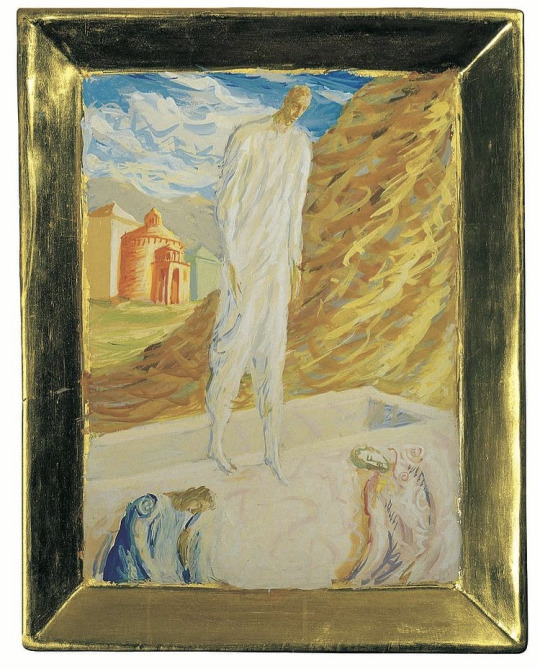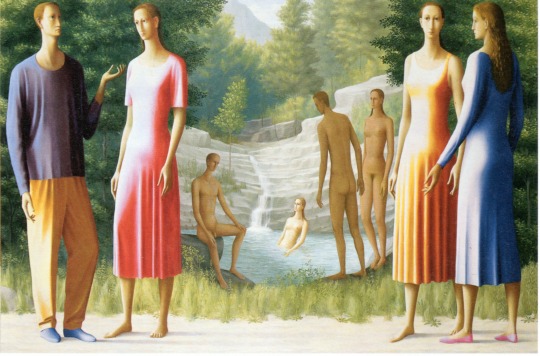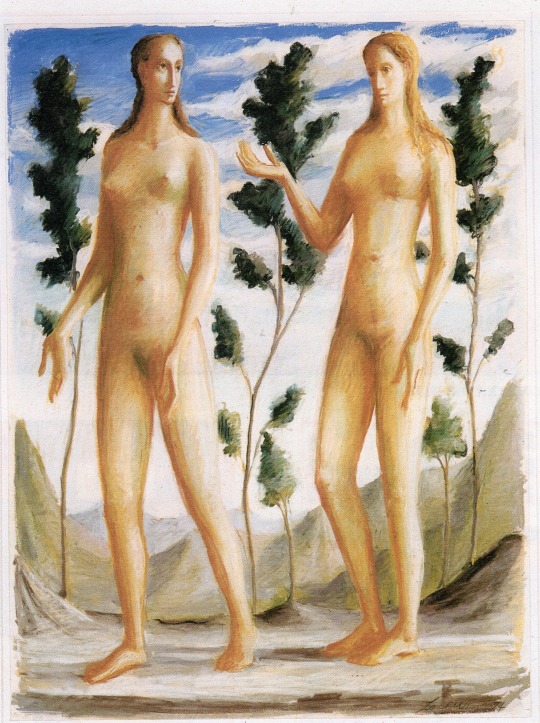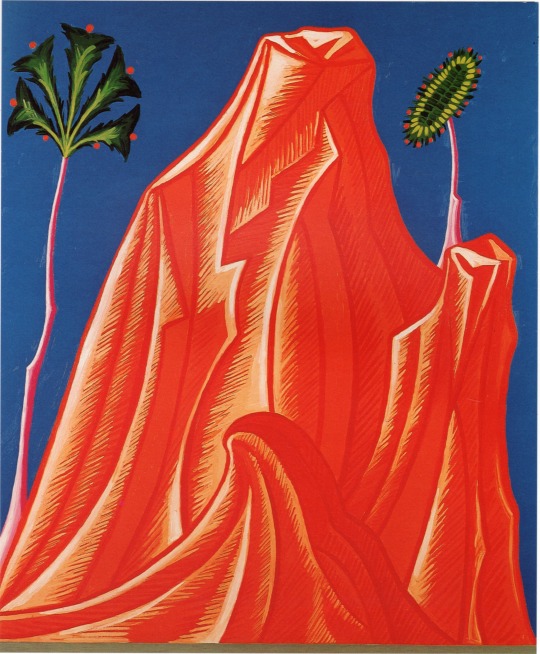#lorenzo bonechi
Text

Lorenzo Bonechi (1955-1994) — The Angel and Jacob [tempera on paperboard, 1994]
231 notes
·
View notes
Text
Contemporaneamente Gualdo Tadino. Festival in Umbria dell’arte contemporanea
Sei mostre in sei sedi museali cittadine e un cartellone ricco di giornate studio e laboratori per famiglie fanno parte di Contemporanemente Gualdo Tadino, il nuovo Festival d’arte contemporanea che animerà l’Umbria fino a gennaio 2024.
La rassegna si inserisce nell’ambito delle iniziative volte ad espandere la vocazione culturale e ella provincia di Perugia, unendo il patrimonio storico artistico locale con l’arte contemporanea e l’innovazione culturale.
Tra le diverse mostre in programma spicca la prima dedicata alla figura del gallerista recentemente scomparso Pio Monti, intitolata Pittura italiana contemporanea. Ultimi sessant’anni. Un percorso di ricerca per mari e Monti.
Monti fu tra i galleristi che hanno fatto la storia di Roma nel secondo novecento accanto a Plinio De Martii, Gian Tommaso Liverani, Fabio Sargentini e Gian Enzo Speroni, la sua pratica ha espresso un modello culturale e artistico ancora centrale nell’estetica contemporanea.
Il focus sulla pittura nel percorso di ricerca di Pio Monti ha lo scopo di contribuire a consegnare allo studio critico dei lavori che sono parte della storia dell’identità pittorica contemporanea italiana.
Si tratta di un percorso espositivo che accompagna il pubblico alla scoperta della pittura italiana contemporanea degli ultimi sessant’anni, all’interno della Chiesa Monumentale di San Francesco. Nella mostra sono raccolte oltre quaranta opere di Jannis Kounellis,Alighiero Boetti, Emilio Prini, Sol LeWitt, Salvo, Luigi Ontani, Gino De Dominicis, Carlo Maria Mariani, Vettor Pisani, Nicola De Maria, Enzo Cucchi, Claudio Cintoli, Mario Schifano, Tano Festa, Tommaso Lisanti, Gian Marco Montesano, Ubaldo Bartolini, H. H. Lim, Felice Levini, Lorenzo Bonechi, Nunzio, Stefano Di Stasio, Fathi Hassan, Alessio Ancillai, Alessandro Cannistrà, Teresa Iaria, Jeffrey Isaac, Claud Hesse, Mark Kostabi.
Oltre all’omaggio al gallerista romano, ci sono una importante retrospettiva dedicata allo scultore contemporaneo Walter Guidobaldi (in arte WAL), che è Il fantastico mondo di WAL. Giganti sculture, magici animali e bizzarre creature, insieme a L’altra metà della Scultura contemporanea: Licia Galizia, Veronica Montanino, Francesca Tulli e Il capolavoro ritrovato. Pier Francesco Mola. Una scoperta di Vittorio Sgarbi.
Invece, nel progetto Lab.artisti emergenti, c’è la personale del pittore Marco Ercoli, Nei tuoi occhi. Per il laboratorio per bambini è da non perdere Mangiare con gli occhi, sulla simbologia che si cela dietro frutta, ortaggi e fiori delle nature morte presenti nelle collezioni museali di Gualdo Tadino, oltre alle giornate studio che approfondiranno le strategie di management culturale degli enti museali e il futuro del giornalismo di settore, tra intelligenza artificiale e social networking.
Read the full article
0 notes
Photo

Lorenzo Bonechi (Italian, 1955-1994), Autoritratto [Self-portrait], 1981. Lithograph, 80 x 56 cm. Number 42/150
153 notes
·
View notes
Photo
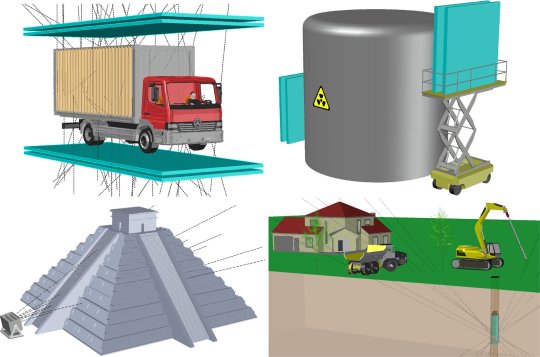
Seeing deeper with atmospheric muons: From archaeology to geology
Muon imaging, or "muography," may be a niche field, but with uses in probing both man-made and natural structures, its appeal is expanding rapidly. A new open-access review published in Reviews in Physics by Lorenzo Bonechi and Raffaello D'Alessandro from the Istituto Nazionale di Fisica Nucleare, Italy, and Andrea Giammanco, Université Catholique de Louvain Centre for Cosmology, Particle Physics, and Phenomenology, Belgium, looks at the history, current status, and future prospects of muography.
Muon imaging methods hinge on the absorption or scattering by structures of atmospheric muons that are created in a chain reaction triggered when cosmic rays strike particles in the upper atmospheres. This scattering and absorption can be used to probe the interiors of these structures.
"Muon imaging creates links between otherwise disconnected areas of science, such as particle physics, geology, and archaeology," Giammanco says. "Moreover, muons come for free, they are a perfectly safe form of radiation, and they are naturally produced and ubiquitous. There is no need for expensive accelerators, or for dangerous natural radiation sources."
Read more.
26 notes
·
View notes
Text
LHCf gears up to probe birth of cosmic-ray showers
CERN - European Organization for Nuclear Research logo.
11 November, 2019
The smallest LHC experiment is set to probe the first interaction that triggers a cosmic-ray shower in the atmosphere
Image above: One of the LHCf experiment's two detectors, LHCf Arm2, seen here during installation into a particle absorber that surrounds the LHC's beam pipe. (Image: Lorenzo Bonechi).
Cosmic rays are particles from outer space, typically protons, travelling at almost the speed of light. When the most energetic of these particles strike the atmosphere of our planet, they interact with atomic nuclei in the atmosphere and produce cascades of secondary particles that shower down to the Earth’s surface. These extensive air showers, as they are known, are similar to the cascades of particles that are created in collisions inside particle colliders such as CERN’s Large Hadron Collider (LHC). In the next LHC, run starting in 2021, the smallest of the LHC experiments – the LHCf experiment – is set to probe the first interaction that triggers these cosmic showers.
Observations of extensive air showers are generally interpreted using computer simulations that involve a model of how cosmic rays interact with atomic nuclei in the atmosphere. But different models exist and it’s unclear which one is the most appropriate. The LHCf experiment is in an ideal position to test these models and help shed light on cosmic-ray interactions.
In contrast to the main LHC experiments, which measure particles emitted at large angles from the collision line, the LHCf experiment measures particles that fly out in the “forward” direction, that is, at small angles from the collision line. These particles, which carry a large portion of the collision energy, can be used to probe the small angles and high energies at which the predictions from the different models don’t match.
Using data from proton–proton LHC collisions at an energy of 13 TeV, LHCf has recently measured how the number of forward photons and neutrons varies with particle energy at previously unexplored high energies. These measurements agree better with some models than others, and they are being factored in by modellers of extensive air showers.
In the next LHC run, LHCf should extend the range of particle energies probed, due to the planned higher collision energy. In addition, and thanks to ongoing upgrade work, the experiment should also increase the number and type of particles that are detected and studied.
What’s more, the experiment plans to measure forward particles emitted from collisions of protons with light ions, most likely oxygen ions. The first interactions that trigger extensive air showers in the atmosphere involve mainly light atomic nuclei such as oxygen and nitrogen. LHCf could therefore probe such an interaction in the next run, casting new light on cosmic-ray interaction models at high energies.
Find out more in the Experimental Physics newsletter article: https://ep-news.web.cern.ch/content/lhcf-sheds-light-hadronic-interaction-models
Note:
CERN, the European Organization for Nuclear Research, is one of the world’s largest and most respected centres for scientific research. Its business is fundamental physics, finding out what the Universe is made of and how it works. At CERN, the world’s largest and most complex scientific instruments are used to study the basic constituents of matter — the fundamental particles. By studying what happens when these particles collide, physicists learn about the laws of Nature.
The instruments used at CERN are particle accelerators and detectors. Accelerators boost beams of particles to high energies before they are made to collide with each other or with stationary targets. Detectors observe and record the results of these collisions.
Founded in 1954, the CERN Laboratory sits astride the Franco–Swiss border near Geneva. It was one of Europe’s first joint ventures and now has 23 Member States.
Related link:
LHCf experiment: https://home.cern/science/experiments/lhcf
For more information about European Organization for Nuclear Research (CERN), Visit: https://home.cern/
Image (mentioned), Text, Credits: European Organization for Nuclear Research (CERN), By Ana Lopes.
Best regards, Orbiter.ch
Full article
14 notes
·
View notes
Photo

Si inaugura sabato 5 ottobre l’esposizione curata da mons. Timothy Verdon: in mostra le opere degli artisti toscani Lorenzo Bonechi, Frank Dituri, Luigi Fatichi e Mauro Manetti Celebrare il lato spirituale dell’uomo, ciò che più intimamente lo illumina, in un mondo sempre più secolarizzato.
0 notes
Photo
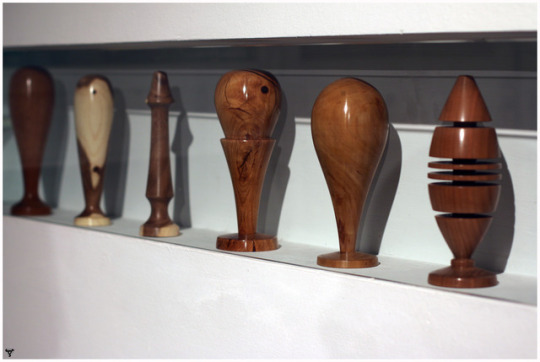
Guaizine ft. Sensus luoghi per l'Arte Contemporanea:
“Francesco Andrenelli, Chiari del bosco” con Fabrizio Corneli, Angelo Barone, Lorenzo Bonechi, Manuela Mancioppi & Mitsunori Kimura
Jan. 2017 | More #ContemporaryArt on www.guaizine.com
19 notes
·
View notes
Text

Lorenzo Bonechi (1955-1994) — Rustic Parade [oil on canvas, 1985]
59 notes
·
View notes
Photo






Lorenzo Bonechi, Conversation series
10 notes
·
View notes
Text
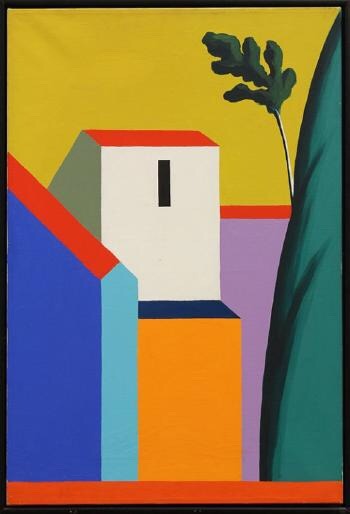
Lorenzo Bonechi (Italian, 1955-1994), Città celeste, 1988. Oil on canvas, 90.17 x 60.33 cm
146 notes
·
View notes
